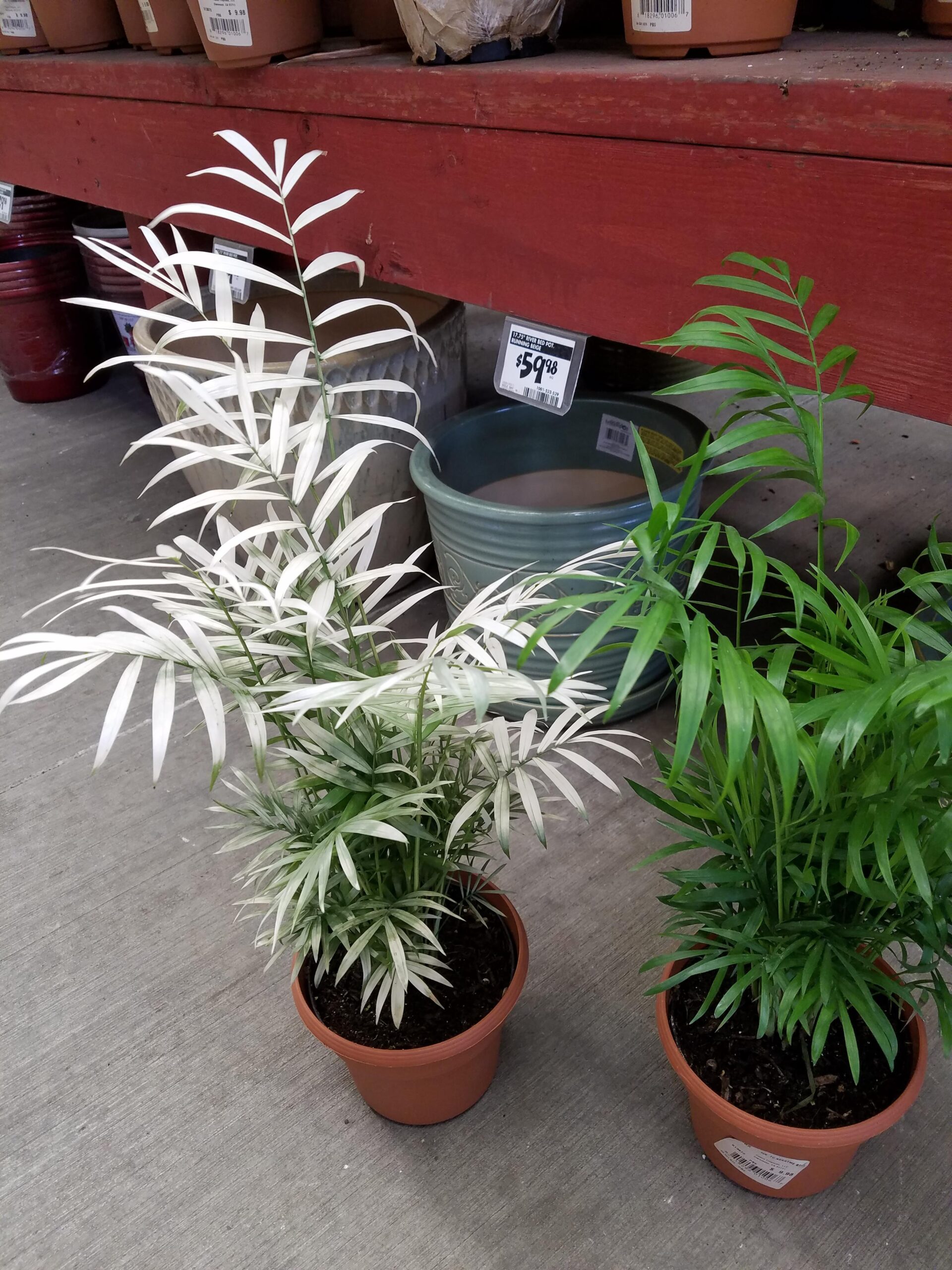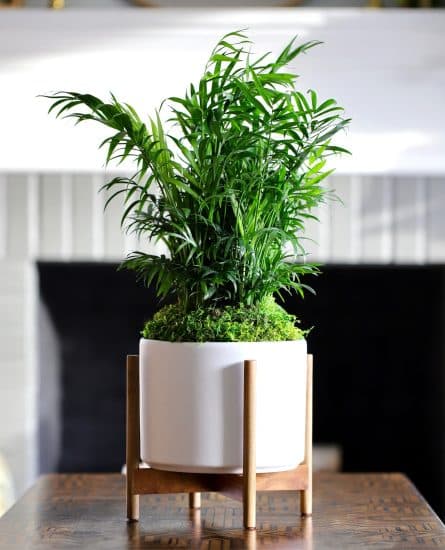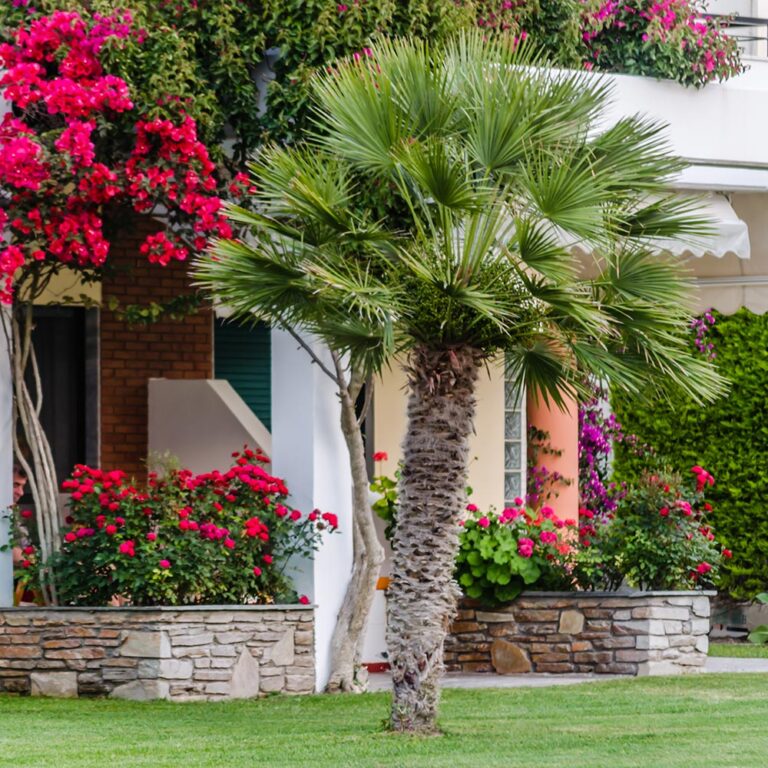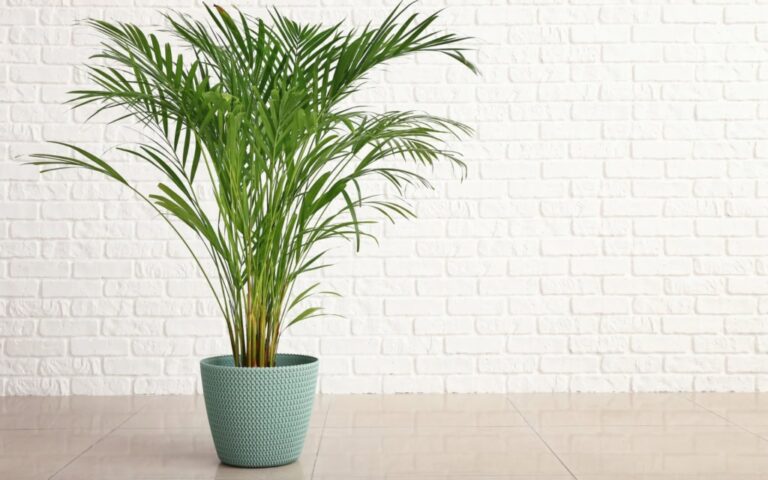Parlor Palm Care Basics
Understanding how to properly care for your parlor palm is crucial for maintaining its health and vibrancy. Below, we cover common issues and nutrient deficiencies that can impact these indoor plants.
Common Issues with Parlor Palms
Parlor palms are generally hardy plants, but they are not without their issues. Gardeners often encounter a variety of problems that can affect the health and appearance of these palms.
- Yellow Leaves: Yellowing leaves may be part of the plant’s natural lifecycle, but persistent yellowing, especially in new leaves, can indicate issues such as overwatering, root rot, underwatering, nutrient deficiencies, or pests. Keeping an eye on leaf color can help diagnose potential problems.
- Spider Mites: These pests thrive in dry conditions and can cause the leaves to become speckled or yellowed. Signs of infestation include fine webbing among leaves and stems. These can be treated with water blasts, miticides, or insecticidal sprays (Gardening Know How).
- Scale Insects: Scale insects can lead to stunted and weakened plants with yellowing or wilted leaves. Early intervention is key, as these pests can be controlled by dabbing affected areas with isopropyl alcohol and using insecticidal soap or pyrethrin-based chemicals on crawlers (Gardening Know How).
For additional information on specific issues like parlor palm brown leaves and parlor palm turning brown, check our internal resources.
Nutrient Deficiencies and Impact
Nutrient deficiencies are another set of challenges that can affect the health of parlor palms. Proper feeding routines and the right type of fertilizer can solve most of these issues.
- Magnesium Deficiency: One of the most common nutrient issues in parlor palms is magnesium deficiency. This condition is often noticed when the tips of the leaflets turn yellow and the discoloration moves inward. Addressing this typically involves supplementing with a magnesium-rich fertilizer.
To avoid these deficiencies and ensure optimal growth, consider using appropriate parlor palm fertilizer and regularly checking soil nutrient levels.
By understanding these common issues and nutrient deficiencies, you can better care for your parlor palm. For more tailored advice, including how to handle specific symptoms and routines, visit our additional guides on parlor palm care, parlor palm size, and parlor palm repotting.
Pests Affecting Parlor Palms
Parlor palms may suffer from common pests such as spider mites, mealybugs, and scale insects. These pests can cause various issues, including the discoloration and wilting of leaves. Early detection and proper management are crucial in maintaining the health of your parlor palm.
Spider Mites and Their Impact
Spider mites are tiny, nearly invisible pests that thrive in dry conditions. They often go unnoticed until they cause significant damage to parlor palm leaves. Infestation signs include yellowing or speckled leaves, and fine webbing that can be seen among the leaves and stems.
Effective Treatment Methods:
- Regular misting and cleaning of foliage to increase humidity and deter mites.
- Using miticides or specialized insecticidal sprays designed to eliminate spider mites.
| Pest | Symptoms | Treatment |
|---|---|---|
| Spider Mites | Yellowing or speckled leaves, webbing | Misting, cleaning foliage, miticides, insecticidal sprays |
Dealing with Mealybugs and Scale Insects
Mealybugs and scale insects are commonly found on parlor palms and can cause significant damage if not managed properly.
Mealybugs
Mealybugs appear as small, white cottony clusters under leaves and in joints of the plant. Their feeding leads to yellowing and wilting of leaves.
Control Methods:
- Washing off mealybugs with water.
- Dabbing infested areas with isopropyl alcohol.
Scale Insects
Scale insects are pierce-sucking pests that can cause stunted growth, yellowing, and wilting of parlor palm leaves. They are easier to control in the crawler stage.
Control Methods:
- Dabbing infested areas with isopropyl alcohol.
- Using insecticidal soap and chemical insecticides made with pyrethrins for crawler stage insects.
| Pest | Symptoms | Treatment |
|---|---|---|
| Mealybugs | White cottony clusters, yellowing leaves, wilting | Washing, isopropyl alcohol |
| Scale Insects | Stunted growth, yellowing, wilting | Isopropyl alcohol, insecticidal soap, pyrethrin-based insecticides |
To maintain the health of your parlor palm and prevent issues like parlor palm leaves turning white, regular checks and prompt action are essential. For more tips and information on caring for your parlor palm, visit our pages on parlor palm care and tips for straightening curly hair.
Troubleshooting Discoloration in Parlor Palms
Discoloration in Parlor Palm leaves can be a sign of underlying issues that need immediate attention. This section focuses on understanding and addressing common discoloration problems like yellowing leaves and white tips.
Understanding Yellowing Leaves
Yellow leaves on a Parlor Palm are not uncommon and can result from various factors:
- Natural Aging: Yellowing can be a normal part of the plant’s life cycle, especially for older leaves located at the base. Regular pruning of aged yellow leaves can help maintain the plant’s aesthetic.
- Overwatering: Consistently wet soil can lead to root rot, resulting in yellowing leaves. Ensure the soil dries out between watering sessions to avoid waterlogged roots.
- Underwatering: Insufficient water can cause soil dryness, leading to yellow and wilting leaves. Maintain a regular watering schedule to keep the soil moist, but not soggy.
- Nutrient Deficiencies: Lack of essential nutrients like nitrogen, magnesium, and manganese can also cause yellowing leaves. Regular use of a balanced parlor palm fertilizer can mitigate nutrient deficiencies.
- Exposure to Direct Sunlight: Parlor Palms thrive in indirect light. Overexposure to direct sunlight can result in leaf burn, causing yellow discoloration. Moving the plant to a location with filtered or indirect light can prevent further damage.
| Issue | Symptoms | Solution |
|---|---|---|
| Overwatering | Yellow, wilting leaves | Allow soil to dry between watering |
| Underwatering | Dry, yellow leaves | Maintain regular, moderate watering |
| Nutrient Deficiencies | General yellowing | Use balanced fertilizer periodically |
| Sunlight Exposure | Yellow/brown patches | Move to indirect light |
Explore more about parlor palm yellow leaves for comprehensive insights.
Addressing White Tips on Parlor Palms
White tips on Parlor Palm leaves can be concerning and are typically caused by the following factors:
- Fluoride Sensitivity: Parlor Palms are sensitive to fluoride, often found in tap water. Using distilled or filtered water can prevent leaf tip discoloration.
- Hard Water: Excessive minerals in hard water can cause white or brown tips. Collecting rainwater or using bottled water can reduce mineral buildup on leaf tips.
- Inadequate Humidity: Low humidity levels can lead to dry, white tips. Increasing ambient humidity around the plant can help prevent this issue. Utilizing a humidifier or placing the plant on a humidity tray can be beneficial.
- Pests: Infestation by pests like spider mites or mealybugs can result in white spots or tips. Early detection and treatment through insecticidal soap or neem oil can ensure healthy growth.
| Cause | Symptoms | Solution |
|---|---|---|
| Fluoride Sensitivity | White leaf tips | Use distilled or filtered water |
| Hard Water | White/brown leaf tips | Use rain or bottled water |
| Low Humidity | Dry white tips | Increase humidity, use a humidifier |
| Pest Infestation | White spots/tips | Treat with insecticidal soap/neem oil |
For a more in-depth look at common issues and their remedies, visit our page on parlor palm brown tips.
Understanding the reasons behind yellowing leaves and white tips can help gardeners provide optimal care to their Parlor Palms. Addressing these discoloration issues promptly ensures healthier, more vibrant plants. For more general information on maintaining Parlor Palms, check out our article on parlor palm care.
Optimal Environment for Parlor Palms
Creating an optimal environment is key to ensuring the health and vitality of your parlor palm. Proper lighting, humidity, watering practices, and soil moisture are essential factors to consider.
Light and Humidity Needs
Parlor palms thrive in bright, indirect light but can also tolerate lower light conditions. This makes them ideal for indoor settings where direct sunlight might not be readily available. Too much direct sunlight can scorch the leaves, leading to discoloration and browning.
Humidity is another crucial factor. Parlor palms are native to rainforests and thrive in high humidity levels. Low humidity can result in brown tips on the leaves
| Condition | Ideal Level |
|---|---|
| Light | Bright, indirect light |
| Humidity | High (50% – 70%) |
Regular misting can help increase humidity around the plant. For more detailed guidance on maintaining humidity levels, check out our article on parlor palm humidity.
Watering Practices and Soil Moisture
Proper watering practices are vital for the health of parlor palms. Overwatering can lead to root rot and other issues, while underwatering can cause the leaves to turn brown and dry out (Gardening Know How). The key is to maintain consistent soil moisture without letting the soil become soggy.
| Practice | Recommendation |
|---|---|
| Watering Frequency | Once the top 1-2 inches of soil are dry |
| Soil Moisture | Evenly moist but not waterlogged |
Using well-draining soil is important to prevent water from accumulating at the roots. For more in-depth information on watering, visit our article on parlor palm water requirements.
By understanding and implementing optimal light, humidity, and watering practices, you can create an environment where your parlor palm will flourish, preventing issues like parlor palm leaves turning white and parlor palm falling over.




